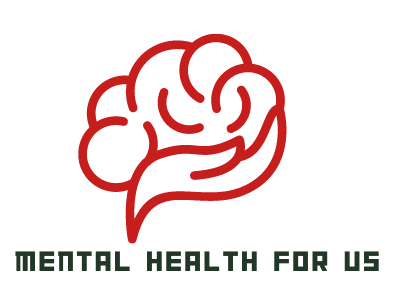Introduction
Hospitalization is essential for bipolar disorder patients’ comprehensive care and treatment. Bipolar disorder causes extreme mood swings, including manic highs and depressive lows, which can disrupt daily life and endanger the sufferer and others. Hospitalization helps manage this disorder by providing a structured environment for assessment, stabilization, and intervention during a crisis or acute symptom exacerbation. This article discusses the purpose, process, and importance of hospitalization for bipolar disorder patients’ mental health and stability.
Hospitalization for Bipolar Disorder: Clinical Characteristics and Factors
Clinical characteristics and factors are crucial to understanding bipolar disorder hospitalization. Manic and depressive episodes characterize bipolar disorder, a complex mental health condition. These episodes can cause functional impairments and psychiatric hospitalization. The severity of symptoms, frequency of mood episodes, comorbid mental health conditions, substance abuse, previous hospitalizations, and medication management can affect hospitalization. Clinical factors guide bipolar disorder treatment and help mental health professionals provide appropriate care. Understanding these factors helps develop effective bipolar symptom management and relapse prevention strategies, improving bipolar disorder outcomes.
Signs and symptoms
Bipolar disorder causes extreme mood swings, including manic and depressive episodes. A manic episode is characterized by elevated mood, energy, and impulsivity. Manic episodes can cause racing thoughts, decreased sleep, high self-esteem, and risky behavior. Depression is characterized by sadness, hopelessness, and loss of interest in activities. Bipolar disorder patients may have mixed episodes with manic and depressive symptoms.
Bipolar disorder patients often experience mood swings between mania and depression. Depressed symptoms include worthlessness, decreased energy, and appetite and sleep changes. Irritability, agitation, and concentration problems are bipolar symptoms. These symptoms’ severity and duration vary by person.
Bipolar disorder diagnosis and treatment depend on recognizing its symptoms. If someone you know has bipolar disorder symptoms like manic episodes, depressive episodes, mixed episodes, mood swings, or others.
Risk Factors for Hospitalization
Bipolar disorder patients worry about hospitalization because it’s a crucial treatment step. Mental health professionals can target interventions and support by understanding hospitalization risk factors.
Bipolar disorder patients’ hospitalization risk is affected by several factors, according to a retrospective Poisson regression study. Previous hospitalizations, mania, depression, and substance use disorders are examples. The study also found that bipolar disorder patients who abused alcohol or drugs were more likely to be hospitalized.
Psychiatric symptoms like mixed episodes and depressive symptoms, along with poor medication management, were risk factors for hospitalization in another Cox regression study. It stressed the importance of consistent and appropriate bipolar disorder treatment to reduce hospitalization and its costs.
Identifying these risk factors allows mental health professionals to develop targeted interventions to help bipolar disorder patients manage symptoms and avoid hospitalization. Bipolar disorder patients can recover and maintain stability with comprehensive treatment plans that may include medication adherence, individual and family therapy, and substance abuse counseling.
Co-occurring Mental Health Conditions
Bipolar disorder often has co-occurring mental health conditions. These conditions can greatly affect bipolar disorder treatment.
Bipolar disorder often co-occurs with anxiety, substance use, ADHD, and borderline personality disorder. Research shows that anxiety disorders co-occur most often with bipolar disorder, followed by substance use disorders.
These co-occurring conditions can complicate bipolar disorder treatment. They often worsen mood episodes and increase hospitalization risk. These conditions can also impair medication management, making bipolar treatment difficult.
Co-occurring mental health conditions affect more than mental health. Bipolar disorder patients’ social and occupational functioning is also affected, lowering quality of life and productivity. Co-occurring conditions are treated holistically to address both bipolar symptoms and mental health issues.
Mental health professionals must identify and treat co-occurring mental health conditions to treat bipolar disorder. A personalized treatment plan that includes therapy, medication management, and support can help bipolar disorder patients manage their symptoms and improve their health.
Studies on Hospitalization for Bipolar Disorder
Hospitalization is essential for bipolar disorder treatment. Studies have examined bipolar disorder patients’ hospitalization rates, clinical characteristics of mood episodes that lead to hospitalization, and the recovery process after hospitalization. Retrospective and observational studies show that manic episodes cause the most hospitalizations, followed by depressive and mixed episodes. These studies also found that previous hospitalizations, substance abuse, and comorbid psychiatric symptoms increase hospitalization risk. Research also shows that medication management, psychotherapy, and social support reduce hospital stays. Healthcare professionals can use previous studies to prevent hospitalization, improve clinical outcomes, and improve bipolar disorder patients’ well-being.
Retrospective Studies
Retrospective studies have illuminated bipolar disorder hospitalization rates and factors. These case-control and cohort studies examined the relationship between previous hospitalizations and psychiatric symptoms.
These studies found that bipolar disorder patients who have been hospitalized before are more likely to be hospitalized again. Bipolar patients’ previous hospitalizations may increase their risk of rehospitalization.
Additionally, these studies have linked certain psychiatric symptoms to hospitalization rates. For instance, severe manic or depressive symptoms may increase hospitalization. Understanding the clinical characteristics of hospitalization can help mental health professionals identify high-risk patients and provide appropriate interventions.
Retrospective studies have also illuminated how previous hospitalizations affected recovery. Studies have shown that people with a history of hospitalization stay longer and may need more intensive treatment, such as electroconvulsive therapy or medication management.
In conclusion, retrospective studies on bipolar disorder hospitalization have shed light on rates and factors. These findings can improve bipolar disorder management and treatment by preventing rehospitalizations and supporting those with a history of hospitalizations.
Observational Studies
Observational studies have illuminated bipolar disorder hospitalization. These studies examined hospitalization rates and how previous hospitalizations affected bipolar patients.
In retrospective observational studies, patient records were analyzed to determine hospitalization trends. They included hundreds to thousands of people for a complete analysis. For long-term hospitalization patterns, study periods varied, often several years.
These studies consistently found a link between previous hospitalizations and future ones. Hospitalization was more likely for bipolar patients who had been hospitalized before. This highlights the need for early intervention and support to prevent relapses and manage the condition.
These studies also linked hospitalization rates to specific psychiatric symptoms. Severe manic or depressive symptoms increase hospitalization risk. Mental health professionals must assess symptom severity and treat it appropriately to avoid crises and hospitalization.
Finally, observational studies on bipolar disorder hospitalizations have shown that previous hospitalizations are a risk factor for future admissions. They also showed how psychiatric symptoms affect hospitalization rates. These findings allow targeted interventions and support for bipolar patients to reduce hospitalizations.
Treatment Considerations for Bipolar Disorder Patients in a Psychiatric Hospital Setting
There are several important factors to consider when treating bipolar disorder, especially for hospitalized patients. Hospitalization may needed to stabilize and manage bipolar disorder, a complex mental health condition with manic and depressive episodes. This article discusses medication management, therapy options, substance abuse, and the importance of a comprehensive recovery plan for bipolar disorder patients in psychiatric hospitals. Healthcare professionals can support and intervene to improve bipolar disorder patients’ hospitalization outcomes by understanding these factors.
Electroconvulsive Therapy (ECT)
ECT is used to treat bipolar disorder when other methods fail. A controlled electric current is passed through the brain to induce a seizure. The procedure is mostly used for treatment-resistant acute mania and depression.
ECT can be effective, but side effects must considered. Headaches, nausea, confusion, short-term memory loss, and sore muscles are common side effects. The procedure’s risks and benefits must considered before undergoing the procedure, even though these side effects are usually mild.
Anesthesiologists and psychiatrists monitor ECT under anesthesia. The number and frequency of ECT sessions depend on the patient’s needs and response.
ECT is reserved for severe bipolar disorder that has not responded to other treatments. Before considering ECT, try medication management, psychotherapy, and lifestyle changes.
In summary, ECT may treat severe bipolar disorder that has not responded to other treatments. It can effective, but side effects must be considered. To find the best treatment for each person, consult a mental health professional.
Family Therapy
Family therapy benefits both bipolar disorder patients and their families. Its participation in therapy helps with recovery and fosters empathy.
Education is a major benefit of family therapy. Family members can learn about bipolar disorder’s symptoms, triggers, and treatments. Family members can better support their loved ones and create a more positive and stable home with this knowledge.
People with bipolar disorder often have trouble communicating with family. Family therapy lets family members express their worries, fears, and frustrations. Improved communication improves bipolar disorder patient well-being and family relationships.
Several family therapy methods have helped treat bipolar disorder. Redefining family roles and improving communication are the goals of structural family therapy. Behavioral family therapy identifies and changes bipolar disorder-exacerbated behaviors. Family psychoeducation about the disorder and coping strategies is another common approach.
Along with family therapy, teachers, administrators, and support staff are essential for a child’s treatment. Education about bipolar disorder helps create a supportive and inclusive school environment that meets the child’s needs and facilitates home-school collaboration.
Family therapy improves bipolar disorder outcomes by supporting, educating, and communicating with the family. By involving family and school staff, treatment becomes a collaborative effort that promotes individual well-being and success.
Individual Therapy
Individual therapy is essential for bipolar disorder treatment. Bipolar disorder patients receive personalized support and guidance to manage their symptoms and improve their well-being.
Individual therapy for bipolar disorder provides a safe and confidential space to explore thoughts, emotions, and experiences. This one-on-one time with a mental health professional helps understand the individual’s challenges and customize treatment.
Individual therapy also teaches mood swings, manic, and depressive coping skills. The therapist teaches trigger recognition, self-care, and routine maintenance. Working with the therapist empowers bipolar disorder patients and gives them control over their symptoms.
Individual therapy also allows people to discuss mental health issues. This may involve addressing past traumas, relationship issues, or stress. Patients can improve self-awareness, resilience, and coping skills through therapy.
Individual therapy is essential for bipolar disorder treatment because it provides personalized support, helps manage symptoms, and empowers patients to take charge of their mental health.
Interventions for Substance Abuse Issues such as Alcohol and Drug Addiction
Bipolar disorder sufferers often abuse drugs. Effective interventions to treat alcohol and drug addiction are necessary because they can worsen bipolar disorder symptoms and slow recovery.
Comprehensive medication management, therapy, and support groups are used to treat bipolar disorder substance abuse. Anti-craving and mood stabilizers can reduce withdrawal symptoms and cravings. Bipolar disorder and substance abuse specialists can customize medication regimens for patients.
Therapy is essential for treating substance abuse’s root causes. Cognitive-behavioral therapy (CBT) helps bipolar disorder patients with substance abuse. CBT helps people identify and change negative thought patterns and prevent relapse. Family therapy can also help with substance abuse’s effects on relationships.
Support groups like AA and NA offer a community of peers who understand their struggles. These groups provide a safe space for people to share their stories and learn from other substance abuse survivors.
A holistic approach, including mindfulness meditation, yoga, and exercise, can help bipolar disorder patients with substance abuse issues. These interventions boost mental health, stress reduction, and coping. Complementary therapies should discussed with doctors to ensure safety and efficacy, especially in bipolar disorder patients.
Overall, bipolar disorder patients with substance abuse need medication management, therapy, support groups, and possibly complementary therapies. These interventions can help bipolar disorder patients overcome substance abuse, improve their well-being, and improve their quality of life.
Conclusion
In conclusion, hospitalization for bipolar disorder is necessary in acute crises or severe symptom exacerbation. Depending on severity and treatment response, hospitalization frequency and duration can vary greatly. Hospitalization aims to keep the patient safe, stabilize their mood, and start or adjust treatment. Bipolar disorder patients need long-term management and support after hospitalization to improve their quality of life.
FAQs
How long is hospitalization for bipolar disorder?
Bipolar disorder hospitalization duration depends on the patient’s needs. It can last days, weeks, or longer in severe cases. The main goals of hospitalization are stabilization, acute symptom management, and safety. The treatment team determines stay length based on patient progress and clinical evaluation.
What is the emergency treatment for bipolar disorder?
Emergency bipolar disorder treatment usually involves hospitalization to ensure safety and stabilize the patient. Medication adjustments, therapy, and mental health care team monitoring may be needed.
How often are bipolar people hospitalized?
The severity of symptoms, treatment response, and support system affect bipolar disorder patients’ hospitalization frequency. Some are hospitalized rarely or never, while others with severe or poorly managed symptoms may return multiple times.







